Track leads from SEO in Formsite
Discover how Attributer can help you track the number of leads your SEO efforts generate using Formsite.
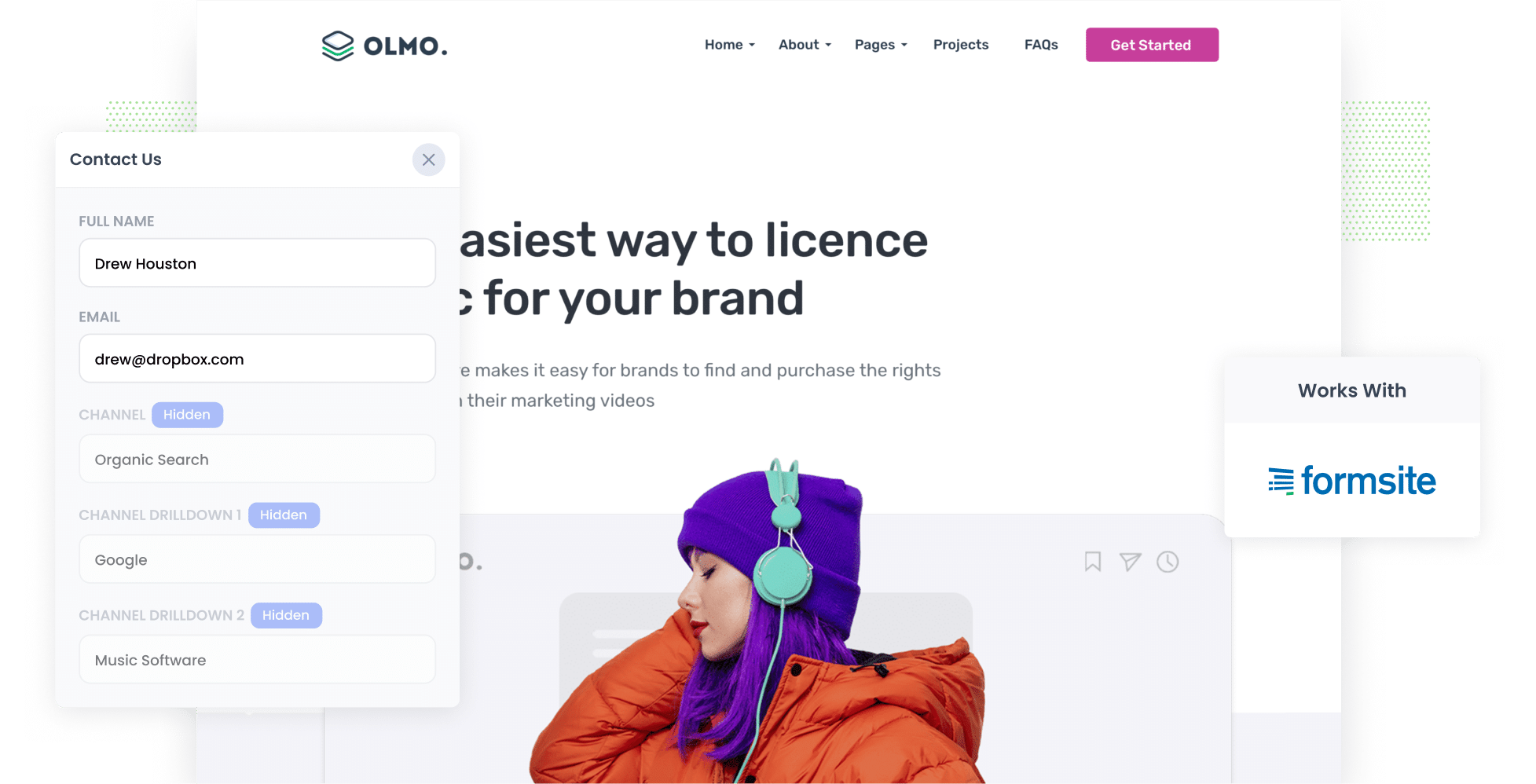
Want to know how many leads your SEO efforts are actually generating?
With tools like Google Analytics, you can track how many website visitors you get from organic search, but you can't see how many of those become leads or paying customers.
That’s where Attributer comes in.
In this guide, we’ll show you how to use Attributer to capture organic search data in Formsite, so you can see exactly how many leads your SEO efforts are bringing in.
4 steps to track leads & customers from SEO in Formsite
Tracking the leads generated from SEO is simple with Attributer and Formsite. Here’s how it works:
1. Install Attributer on your website
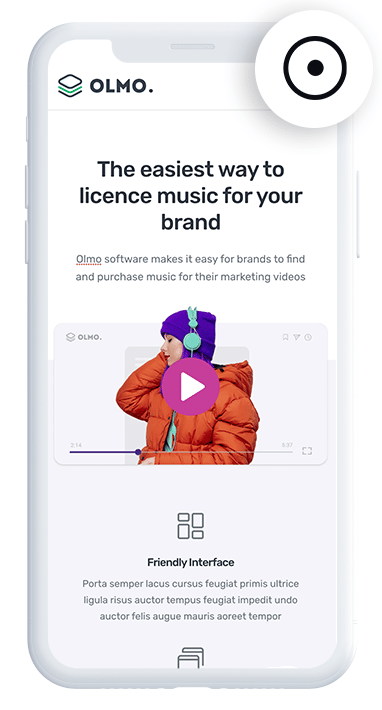
When you start your 14-day free trial of Attributer, you’ll receive a small snippet of code to install on your website.
The setup process is nice and easy. Most website builders allow you to add the code via the Settings section, or you can use Google Tag Manager just as easily.
For a helping hand, check out our step-by-step instructions for popular platforms like WordPress, Wix, Webflow and Squarespace available here.
2. Add hidden fields to your forms
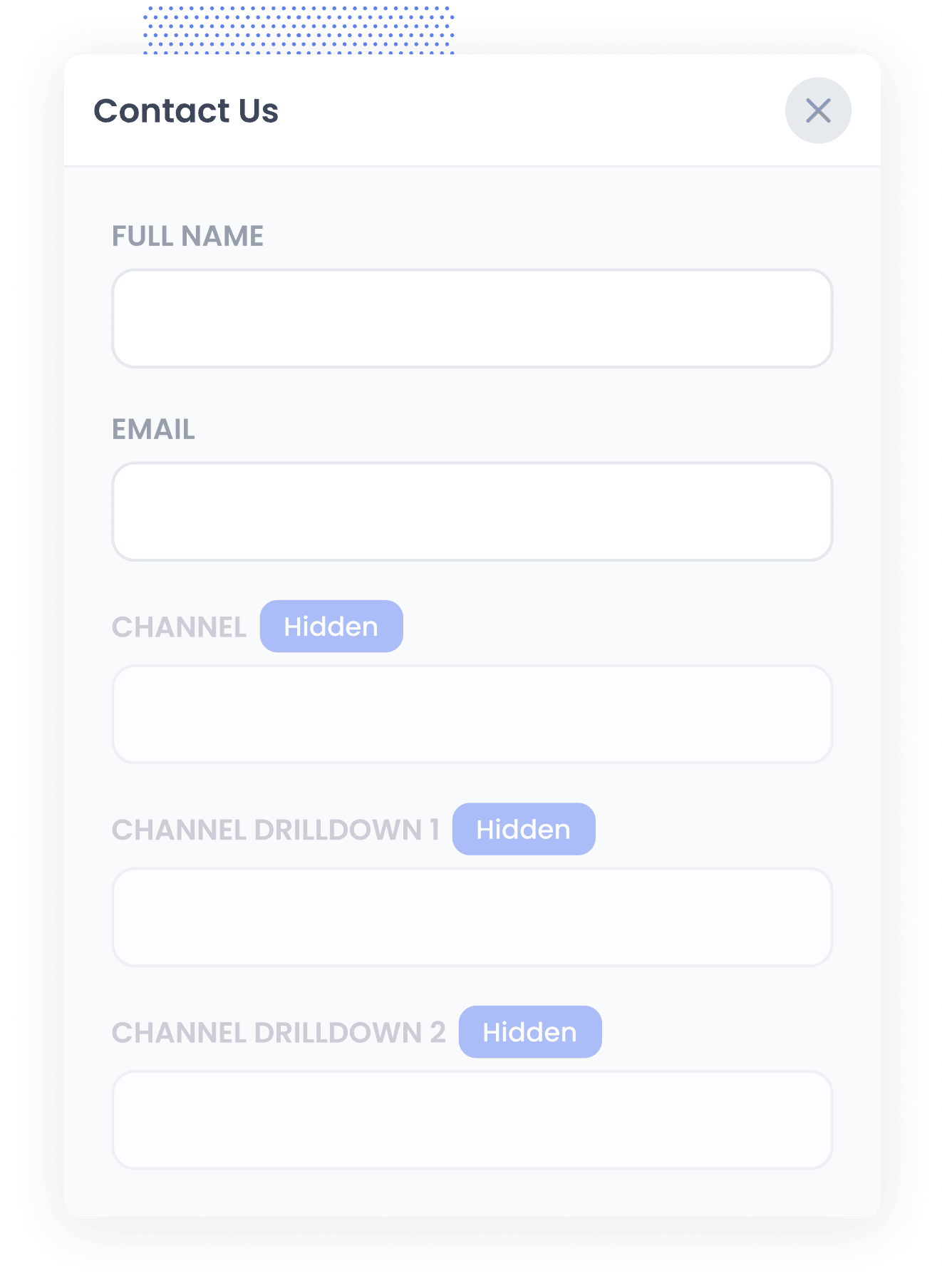
After installing the Attributer code on your site, the next step is to add a series of hidden fields to your lead capture forms. These fields include:
- Channel
- Channel Drilldown 1
- Channel Drilldown 2
- Channel Drilldown 3
- Landing Page
- Landing Page Group
To set up hidden fields in Formsite, add a Short Answer field to your form, rename it to match Attributer’s required fields (e.g., Channel, Landing Page), mark it as Hidden, and save.
3. Attributer writes SEO data into the hidden fields
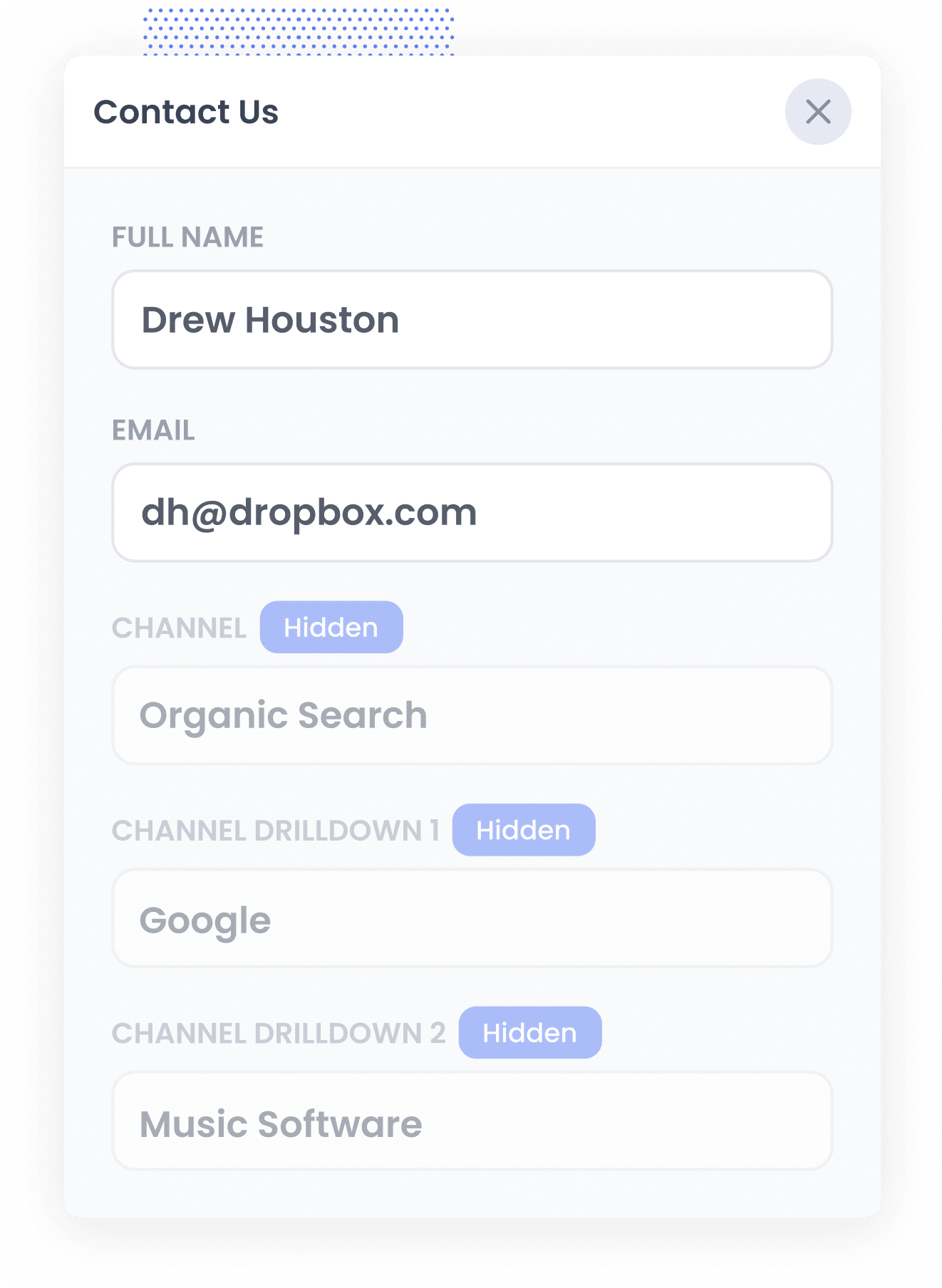
When a visitor lands on your website, Attributer analyses various data points to determine where they came from.
It then classifies them into a channel (e.g., Organic Search, Paid Search, or Paid Social) and stores this information in their browser.
Later, when the visitor fills out a form (such as your ‘Request a Quote’ form), Attributer automatically populates the hidden fields with details about their origin, including the fact they came from Organic Search, which search engine they used, and even the keyword they searched for (when available).
4. SEO data is captured with each lead
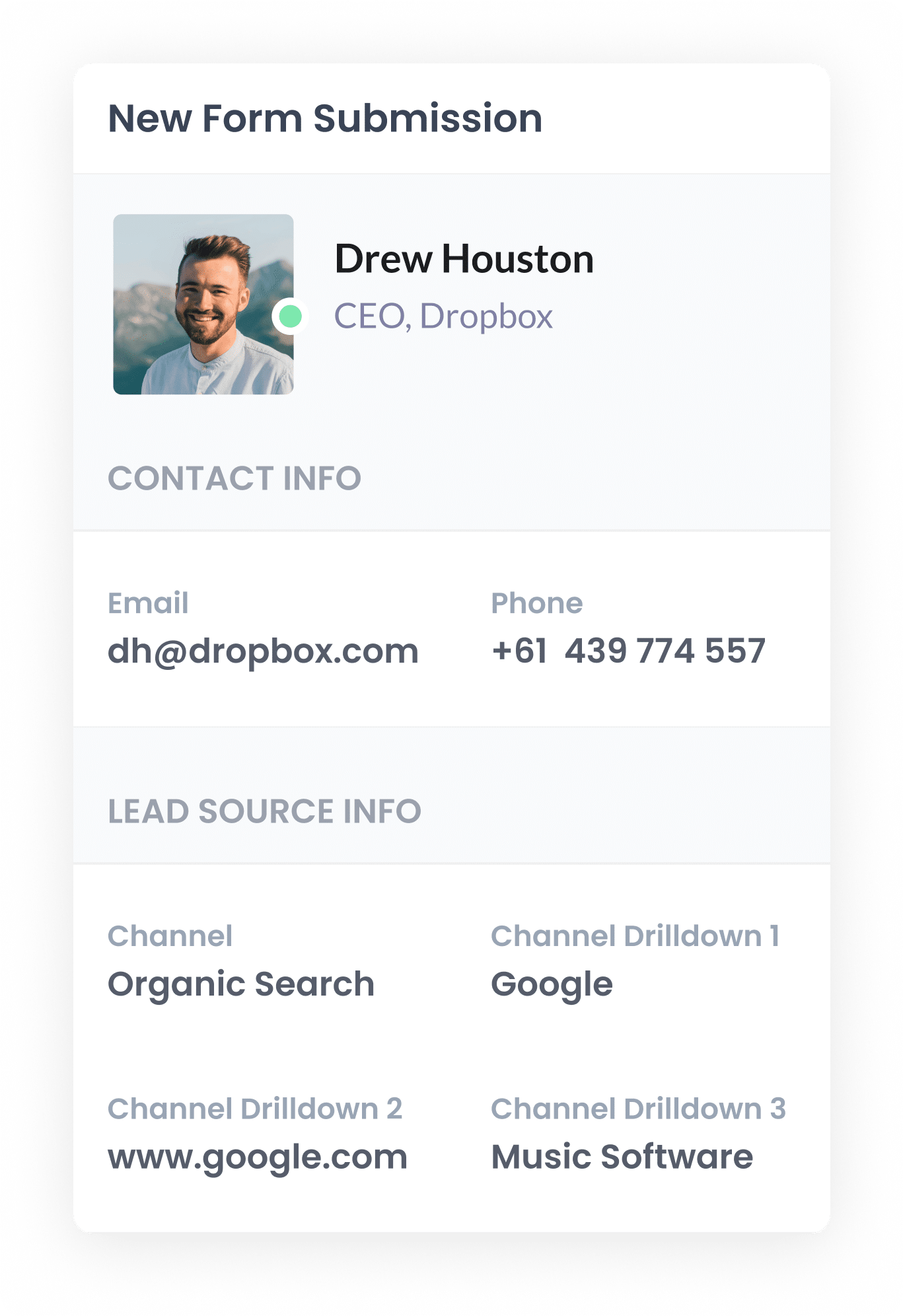
Finally, when the visitor submits the form on your website, the organic search data that Attributer wrote into the hidden fields is captured by Formsite, along with the lead's name, email and other details.
What data gets captured
Attributer tracks how your leads arrived at your site (channel) and which content drew them in (landing page).
For example, if you were part of the marketing team at an accounting firm and a potential client found your site through an organic Google search, the following data would be captured:
- Channel = Organic Search
- Channel Drilldown 1 = Google
- Channel Drilldown 2 = www.google.com (or the specific domain they used, like google.com.au or google.co.uk)
- Channel Drilldown 3 = small business tax accountant Brisbane (or the keyword they searched for, when available)
Additionally, you’d receive details on the specific page they landed on. Using the same example, it might look like this:
- Landing Page = smithandcoaccounting.com.au/services/small-business-tax
- Landing Page Group = /services
This landing page data helps you pinpoint which content is driving leads from organic search, allowing you to focus on creating more of what works and refining your SEO strategy for even better results.
What you can do with the data
Once Formsite captures the organic search data from Attributer, you can use it in the following ways:
- View it in your Formsite account – You’ll see the SEO data displayed alongside each form submission in the Results table inside your Formsite account.
- Include it in email notifications – You can add the organic search details to your lead notification emails, so you can instantly be notified of where each enquiry came from.
- Sync with your CRM – Push the SEO data to tools like Salesforce, HubSpot, Pipedrive and more. This allows you to generate detailed reports showing how many leads came from organic search, how many converted into customers, and how much revenue your SEO efforts are generating.
- Export to a spreadsheet – With Formsite's Google Sheets integration, you can automatically export form submissions (including the organic search data provided by Attributer) to a Google Sheet. Once there, you can create charts and graphs in the spreadsheet or connect tools like Google Data Studio to build custom dashboards for more advanced analysis.
3 example reports you can run when you capture organic search data in Formsite
Throughout my 15-year career in marketing, I’ve dedicated countless hours to SEO and analysed hundreds of reports to understand the effectiveness of our efforts.
Here are three of the most insightful reports I’ve relied on time and time again.
1. Leads by Channel
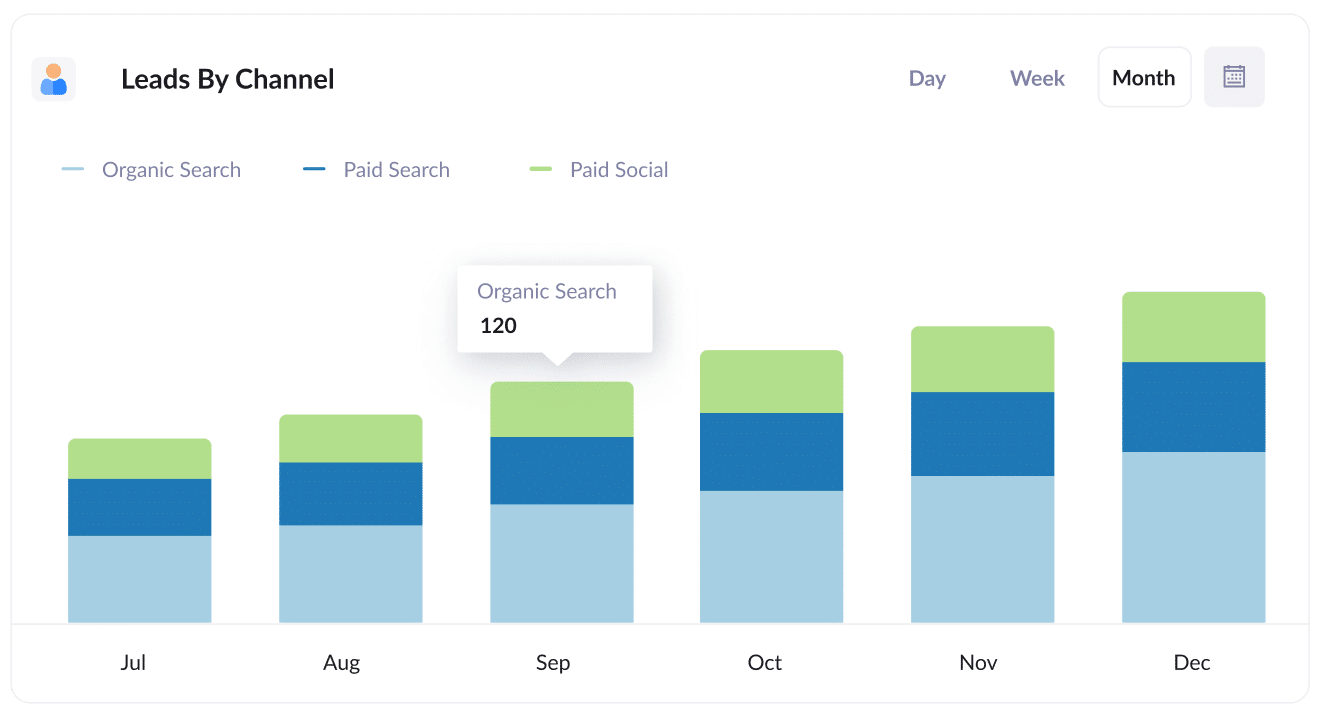
This report outlines the number of leads you generate each month, displayed by the channel they came through, such as Organic Search, Paid Search, or Paid Social.
It gives you a clear, top-level view of your SEO efforts and whether they’re driving meaningful results for your business.
It’s also a great way to compare performance across channels. For example, if Organic Search is bringing in more leads than Paid Search, but most of your marketing spend is going to paid ads, it's a chance to reallocate budget and invest more heavily in SEO.
2. Leads from Organic Search by Landing Page Group
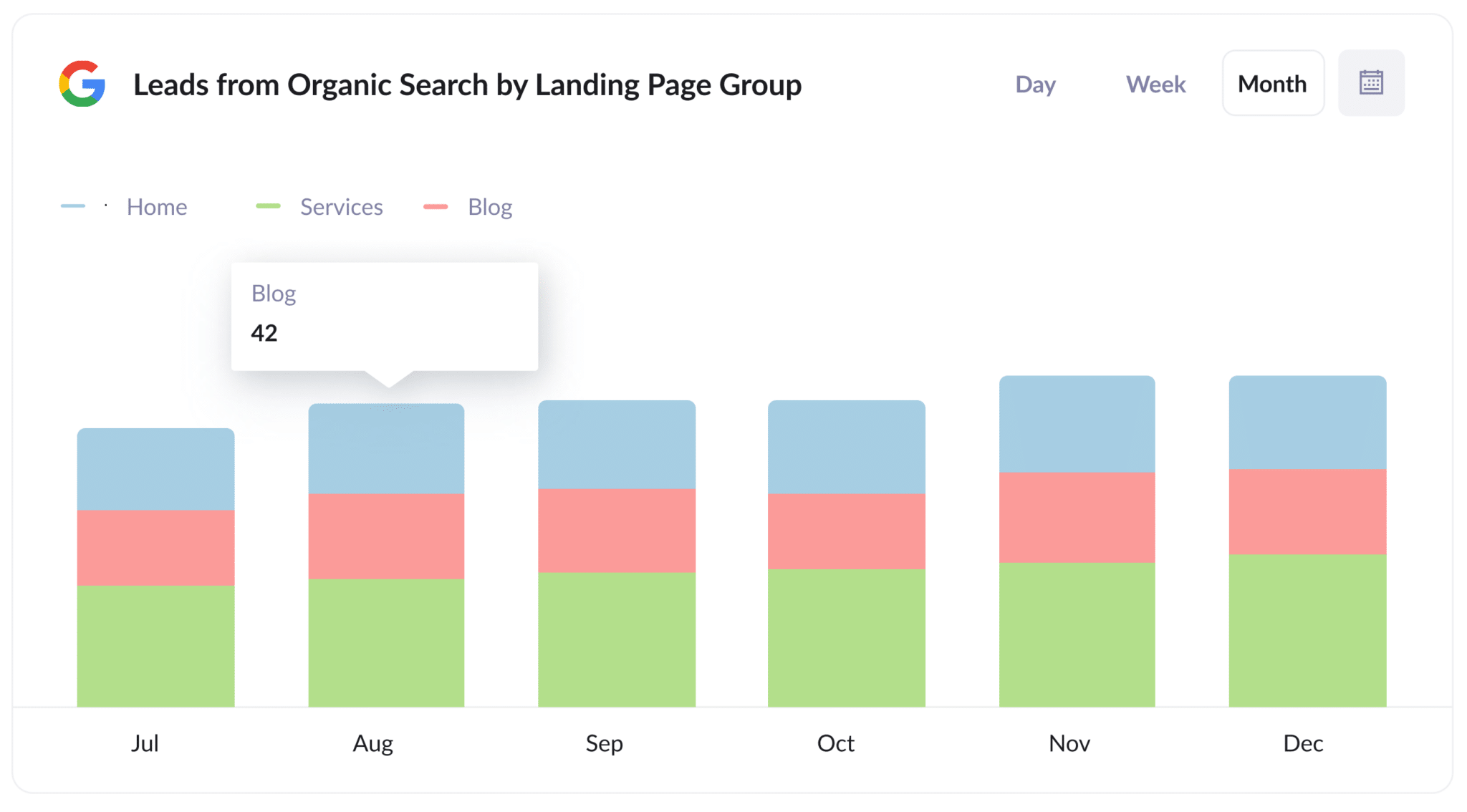
This report highlights how many new leads are coming from organic search each month, grouped by landing page category (Home, Blog, Services, etc.).
It’s a good way to see which sections of your website are performing best, and helps you understand what type of content is generating the most leads (and therefore what you should create more of)
3. Leads from Organic Search by Landing Page
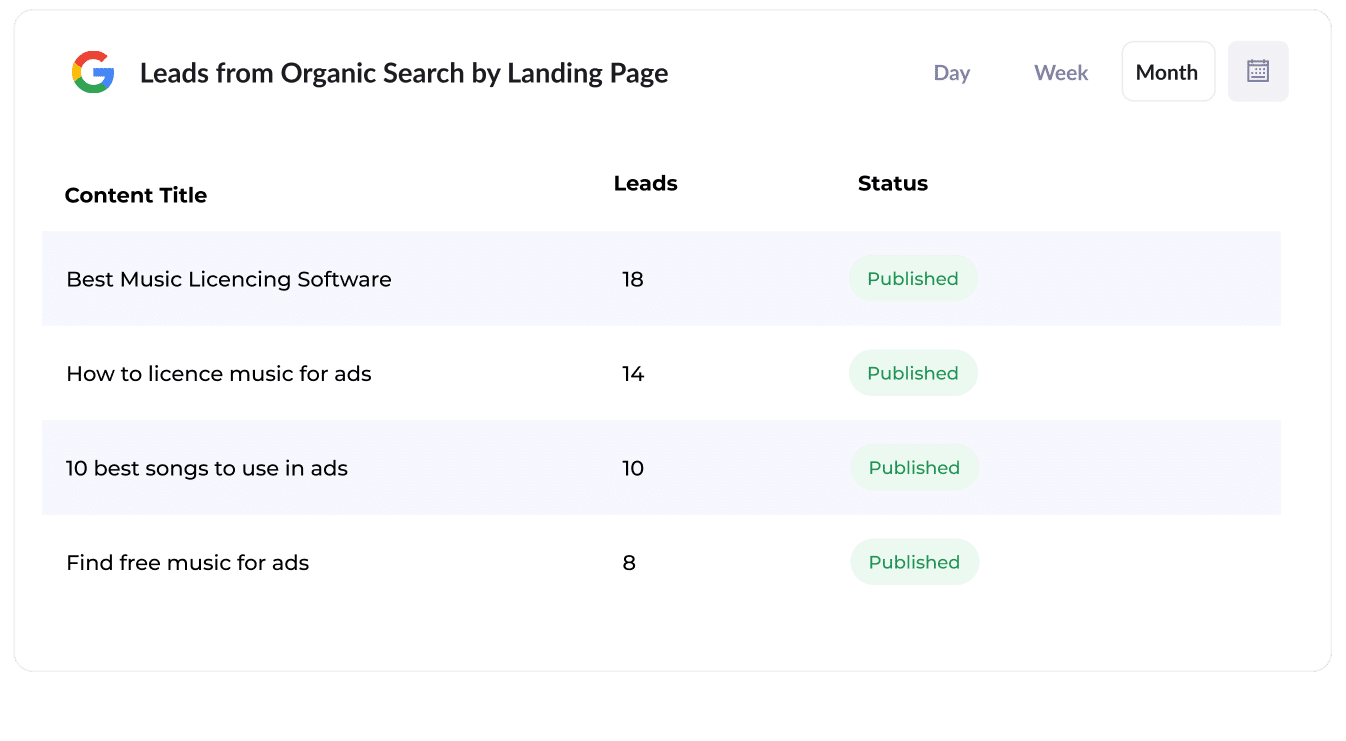
This report tracks the number of new leads generated by each piece of content on your site, such as blog posts or landing pages.
It clearly shows which pages are driving the most leads, making it easy to spot your top-performing content.
With this insight, you can make smarter, data-driven decisions about what topics to focus on and what types of content to produce more of.
How Attributer helped Flare HR 4x the number of leads they got from SEO
Flare HR is a Sydney-based provider of HR management software with thousands of customers and more than 100 employees.
As part of their product offering, Flare included a range of HR document templates, such as employment contracts and internal policy templates, which customers could us in their own business.
To boost website traffic and lead generation through SEO, Flare made a strategic move: they published these templates publicly on their marketing website. Each document received its own dedicated landing page, and within a few months, these pages were attracting tens of thousands of organic visits each month.
But there was a challenge: while traffic was strong, the Flare team had no visibility into whether these visitors were converting into leads and customers, or just downloading the templates and leaving.
That’s where Attributer came in.
When a visitor landed on the Flare HR site, Attributer stores key details about where they came from, including the channel they arrived from (e.g. Organic Search), the specific landing page they visited (e.g. flarehr.com/templates/mobile-phone-policy), and the broader landing page group (e.g. /templates).
Then, when the visitor completed a form (like their demo request form), Attributer wrote the data into hidden fields in the form, and it was captured and sent to their CRM.
With this data in hand, Flare’s marketing team was able to run detailed reports showing exactly how many leads came from their templates, how many converted into paying customers, and how much revenue the initiative generated.
The results spoke for themselves: the template strategy led to a 2.4x increase in new leads per month, all at a virtually zero cost-per-lead.
Encouraged by this success, Flare expanded the initiative. They doubled the number of available templates and further optimised the landing pages. As a result, they ultimately achieved a 4x increase in monthly leads.
“Attributer showed us that our SEO efforts were in fact generating customers & revenue and gave us the confidence to double down. We’ve seen a 4x increase in leads as a result”

James Windon - Co-Founder, Flare HR

Wrap Up
If you’ve been trying to figure out how many leads your SEO efforts are actually generating, and how that number grows over time, Attributer paired with Formsite is a simple and effective solution.
The best part? You can get started for free, and setup typically takes less than 10 minutes. Start your 14-day free trial today and start tracking how many leads & customers you're getting from your SEO efforts!
Get Started For Free
Start your 14-day free trial of Attributer today!

About the Author
Aaron Beashel is the founder of Attributer and has over 15 years of experience in marketing & analytics. He is a recognized expert in the subject and has written articles for leading websites such as Hubspot, Zapier, Search Engine Journal, Buffer, Unbounce & more. Learn more about Aaron here.
